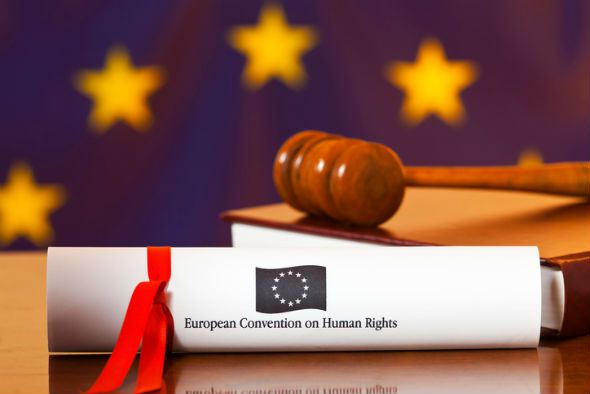Emmanouil Bougiakiotis, LLB, Democritus University of Thrace, Greece, Legal Intern at the Hellenic Data Protection Authority. All views expressed are personal.
I. Introduction
Publicity is a notion that becomes a matter of growing importance in European law, as it can affect numerous rights, such as. the rights to privacy, personal data, freedom of expression and, to some extent, the right of access to documents. However, almost no attention has been given to the conceptual issues with regard to the notion of publication and its characteristics, although they may be crucial in the outcome of a legal judgement.
A characteristic example of this is a largely neglected side of the famous Google Spain case. In this case a Spanish national requested the removal of a Spanish newspaper’s publication about a real estate auction connected with attachment proceedings for social security debts. The original publication of the newspaper took place in 1998, but it was later uploaded online. The Spanish Data Protection Authority (AEPD) rejected the complaint with regard to the newspaper because publication of the information in question was stipulated by law. In contrast, the AEPD upheld the complaint with regard to availability of the information through a search-engine.
Little, if any, consideration was given, however, to the original request in relation to the newspaper. That seems prima facie reasonable: Art. 7(c) of the Data Protection Directive stipulates that processing of data is legitimate when it is made by the data controller to conform to a legal obligation. However, this approach is rather oversimplifying. The government did order a publication to take place, but it ordered specifically a publication on an issue of a newspaper in 1998. Is the appearance of this on the top of a list when someone searches about you on the Internet the same publication as the one ordered by the government? The issue is inherently linked with our concept of publicity.
II. Going deeper on publicity as a concept
For the purpose of my argument publicity can be defined as the making available of information to the wider public without particular requirements to justify its access. To analyze its components, making available means that the information is accessible in some way; the wider public means anyone in general without restriction; and nonexistence of requirements means that there are not any de jure criteria that restrict access. For example, with regard to access to documents, a number of restrictions are accepted. In the areas where these restrictions apply the relevant information may not be considered to be public. Practical difficulties in accessing information are not incorporated in this definition because they are a characteristic of the intensity of the publicity as long as they do not amount to deeming it entirely inaccessible. The traditional perception of publicity presupposes that information is either public or not. This view is not inconsistent with the above definition, but in many cases the crucial question is not whether information is public, but how public it is.
Although in the past the means of publishing information were quite similar in resonance, this is not the case in the modern age. The wide variety of digital media available at low cost and their significantly greater capacity for information retrieval resulted in variations of the intensity of information circulation. As is evident, accessibility is a conditio sine qua non for information to be public. But accessibility varies in relation to the medium used.
Although accessibility differs on a case-by-case basis, there are some criteria which can indicate the intensity of the publicity. The nature of the medium, the duration of the publicity of information, its geographic reach, the ease of retrieval, the language used, and the means that are required to access the information are all inter alia conditions, depending on which, some information may become more accessible than others.
III. The legal implications of the existence of different degrees of publicity
Further publicity: It is generally accepted that if some information is made public legally, it is legal to reproduce that information, unless it is protected by intellectual property laws. That is generally reasonable: you cannot punish someone for disseminating information that is legally published first, because that would be purposeless as it is already available and second, because if the initial publication is legal the further dissemination cannot be illegal. It is, however, accepted that the fact that information is part of the public domain does not absolve the data controller from the obligation to conform to data protection rules. The Irish Data Protection Act, 1988, Section 1 (4) (b), excludes from data protection rules only information published pursuant to a legal obligation. I am reluctant to admit that as a general principle a legitimacy ground must exist under data protection law for processing of lawfully published information to take place. In any case when the personal data are published by the data subject, there usually will be implicit consent for their use. The answer might be different when data are further processed for purposes different to those of the original publication. Additionally, although the European Court of Justice accepted that the legitimacy of an original publication does not deem the further processing of it by search engines necessarily legitimate, (Google Spain SL, Case C-13I/12, ¶ 35), the Court reached that conclusion after considering the fact that the processing by the search engines can enhance the accessibility of the information, (id. ¶ 36-7) and therefore its rationale was the same with the one of the approach suggested in this Post. The approach suggested here has room for application, even if a strict approach is adopted on the matter, as shown by the example used in the Introduction.
If the degree of publicity is greater than that of the original publication, the fact that the information was already public cannot per se legitimize the further publication. By making information more available, the publisher restricts the rights of the person to which the information is related to a greater extent. For instance, if a person agrees to have a picture of him/her published in a leaflet, the publishing party cannot publish that picture online, although it is public. A similar argument can be made for pictures uploaded in social media that are available to a limited number of persons and are subsequently used by the media.
It must be clarified that the fact that some information is published in a more available way, does not mean that it is done so illegally. It just means that invoking its public character does not justify the publication on its own. Legality will be decided based on generally applicable provisions, mainly on freedom of expression.
Proportionality Analysis and Balancing of Rights: When a right is restricted by a measure that includes publication of information, or two rights conflict and the second one includes the right to publish information, the adjudicating court must not only balance the effect that the publicity will have generally but it must examine the different means of publication and their effects on the right implicated. Specifically, when a right is restricted, that restriction must be in accordance with the principle of proportionality. Proportionality is traditionally determined by a threefold test: first, it whether a measure is suitable to achieve a legitimate aim; second, whether that aim cannot be achieved by less restrictive means; and third, whether the restriction is proportionate to the realization of that aim (stricto sensu proportionality).
It is apparent that the analysis supported here is very important with regard to the second part of the proportionality test. When a judge examines whether the publication of information is necessary to achieve the aim at hand, he/she will not examine whether such a necessity exists in abstracto, but in relation to a specific publication. The same applies to conflict of rights, e.g. freedom of expression and the right to private life. When rights conflict, they have to be balanced and realized to the furthest possible extent. The approach on publicity supported here in a way strengthens both the rights that tend to the publication and the ones that do not. That is because in the cases that publication is accepted as necessary, the restriction of the conflicting right may be minimized by applying a less intensive way of publishing. On the other hand, in the case that publication would be denied, it may be accepted when it is of a restricted intensity.
Informational Self-Determination: Finally, the approach to publicity argued herein should not be viewed only as a tool in order to apply legal tests in a better manner but—in some cases—also as an aspect of the data subject’s right to informational self-determination. According to Westin’s famous definition, privacy is “the claim of individuals, groups, or institutions to determine for themselves when, how, and to what extent information about them is communicated to others”. The extent of information communicated to others is largely dependent on the degree of publicity. Therefore, not only should the intensity of publicity be taken into account when applying the law as an aspect of that right, but the data subject should, as a general rule, be given the opportunity to determine that intensity with regard to information relating to him/her.
Featured Image source: http://euap.hkbu.edu.hk/main/eu-data-privacy-law/




